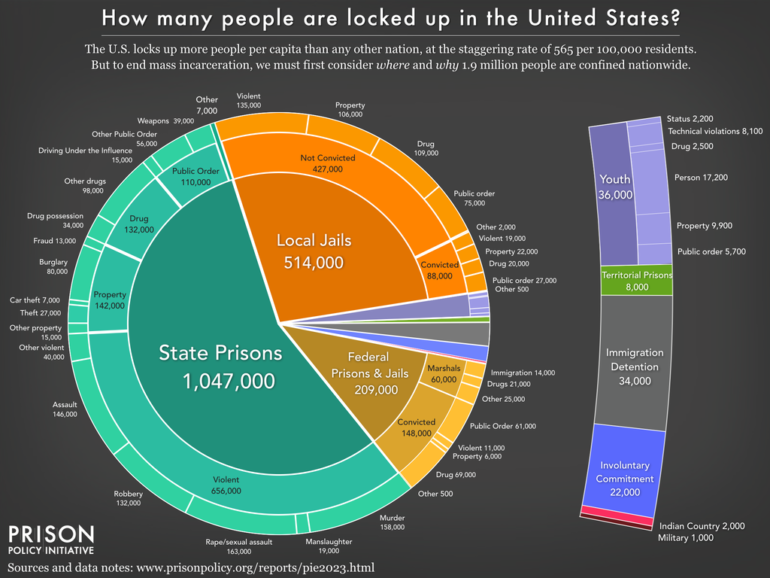The U.S. prison population plummeted during the early months of the COVID-19 pandemic but the percentage of incarcerated Black people rose, according to a new analysis of prison data published April 19 in the journal Nature.
The higher percentage of incarcerated Black people by mid-2020 was found in almost all states, and temporarily reversed a decades-long decrease in the percentage of Black people in the national prison population, researchers from Yale and Northeastern Universities and the Santa Fe Institute found.
While several factors contributed to the increase in percentage of incarcerated Black people during the height of the pandemic, researchers argue that sentencing disparities between Black and white incarcerated people may have played a major role. As court closures at the height of the pandemic slowed the admission of individuals into the prison system, the makeup of prison populations was strongly influenced by differences in sentence lengths by race.
“And disparities in sentencing is something society can do something about,” said co-corresponding author Brandon Ogbunu, an assistant professor of ecology and evolutionary biology in Yale’s Faculty of Arts and Sciences (FAS) and computational biologist.
By the end of spring in 2020, the U.S. prison population had fallen by 200,000 people from pre-pandemic levels. This 17 percent reduction in prisoner population between March 2020 and July 2021 was “the largest decarceration in American history,” Ogbunu said. Courts closed and new admissions to prisons decreased. Many states instituted early release guidelines to reduce prison populations.
Prior to the pandemic, the percentage of incarcerated Black people in U.S. prisons had fallen to 38.9 percent, the lowest level in decades, as more whites without a college education were imprisoned. However, at the height of the pandemic, from March and November of 2020, the percentage of incarcerated Black people increased by almost a full percentage point.
This spike in proportion of Blacks in prison was temporary in most states and approached pre-pandemic rates in early 2021.
Nonetheless, the pandemic prison experience carries lessons for society as a whole, said co-corresponding author Elizabeth Hinton, a professor of history and African American Studies in the FAS and also a professor of law at Yale Law School.
“We think that the pandemic served as a stress test for the criminal legal system. When you put a system like it under stress, the underlying disparities can be amplified,” Hinton said.
“In response to these findings, we believe that society has an ethical obligation to act in order to reduce such disparities, including the reform of sentencing practices.”
Brennan Klein of Northeastern University and Samuel Scarpino of the Santa Fe Institute are co-corresponding authors.
More information:
Brennan Klein, COVID-19 amplified racial disparities in the US criminal legal system, Nature (2023). DOI: 10.1038/s41586-023-05980-2. www.nature.com/articles/s41586-023-05980-2
Citation:
As pandemic prison populations fell, proportion of Black prisoners rose, finds new analysis (2023, April 19)



